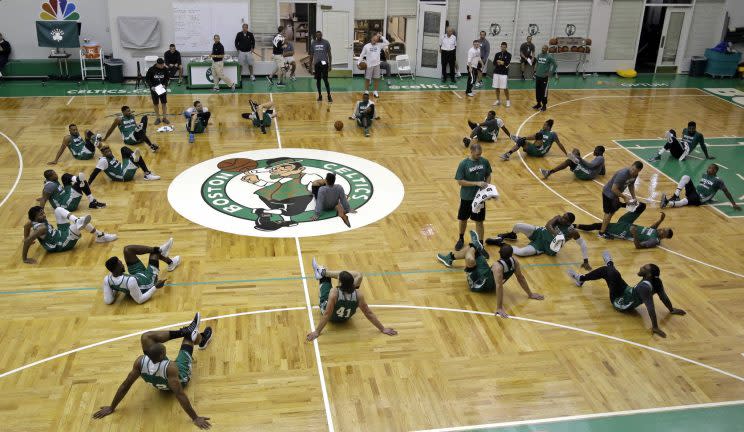Front-Office Insider: The training camp contract

The Vertical Front-Office Insider Bobby Marks, a 20-year executive with the Nets, examines the contracts of players who sign non-guaranteed deals for training camp.
The names barely garner attention.
The fringe NBA players signed in September leading up to training camp do not come across the bottom of your TV screen, names such as Xavier Munford, J.J. O’Brien and Shawn Dawson.
For camp invites who are trying to win a roster spot on teams with 15 guaranteed contracts, the chance to make an impact during the preseason outweighs the financial security of perhaps playing internationally.
The backbone of the training camp roster is the players who fill the last few spots but who likely won’t see their names on the final roster submitted to the league on Oct. 24.
The contracts
Although the contracts are usually signed in late September, the non-guaranteed deal that Jorge Gutierrez signed with the Nets is referred to as a “summer” contract.
The template mirrors that of the $150 million contract Mike Conley signed with the Grizzlies, but with fewer exhibits and dollars, and, of course, no guarantees.
All contracts must have an Exhibit 1A listing the compensation if the player were to earn a roster spot.
In the case of Gutierrez, a player with three years of service, $1,015,245 looks appealing on paper, but it comes with only a per-day guarantee if he were to earn a roster spot.
If Gutierrez is not waived by Oct. 22, he will earn $5,975 per day. If he is waived before that date, he will earn nothing.
Summer contracts also include Exhibits 9 and 6.
Exhibit 6 gives teams a 72-hour window to fail a player based on his physical.
In the case of Hamady Ndiaye, a former Rutgers standout who was a camp invite by the Nets in 2014, he failed his physical before camp even started.
The exhibit protects teams from signing injured players.
Exhibit 9
Before the latest CBA was introduced in 2011, players invited to training camp came with a financial risk.
Under the old CBA, teams would be liable during training camp if a player suffered a long-term injury. The team would still have the ability to waive the injured player, but would owe him the compensation stipulated in his contract until he was cleared to resume basketball activities.
Under the current CBA, teams have the ability to protect themselves from such risk by inserting Exhibit 9 into a contract.
If a player such as Gutierrez were injured during camp, Brooklyn would owe him $6,000 even if the injury were long term.
The termination fee would not count against the Nets’ salary cap.
Players signed to roster spots Nos. 15-20 and who have no salary protection can have this exhibit added.
There are exceptions though.
The Raptors’ Brady Heslip represents roster spot No. 20, but Toronto is not protected by Exhibit 9 because Heslip’s contract is guaranteed for $56,000.
If Heslip were injured during the preseason, Toronto would be responsible for his compensation until he was cleared to play.
Walk-around money and per diem
Although the life of a player on a non-guaranteed contract comes with no financial security, there are compensation elements of being invited to camp.
Each player on the roster is eligible to receive a $2,000 stipend for up to four weeks, along with $128 in meal money per day when the team is on the road.
The stipend does not count against the salary cap and is considered an advance against a player’s salary.
If a player elects to receive the $2,000 per week, the total amount after four weeks is deducted from his Nov. 15 paycheck, the first a player is eligible to receive.
However, players who signed contracts this past summer and received an advance against their current salary – like the Warriors’ Kevin Durant – are ineligible to receive a stipend.
Although the salary is considered an advance, a camp invite with a non-guaranteed deal can keep the amount earned during camp if he is waived at the end of the preseason.
However, if a player is not waived by Oct. 22 but rather on Oct. 24 when rosters are finalized, the team would incur – in the case of the Pelicans’ Dawson – a $6,394 cap hit ($3,197 per day) but not owe Dawson any additional compensation because of the stipend he received during training camp.
Although rosters are filled with non-guaranteed contracts leading up to the first regular-season game, the opportunity to perform on the best stage over the next four weeks is well worth the risk for players looking for a place in the league.
More NBA coverage from The Vertical:

 Yahoo Sports
Yahoo Sports 